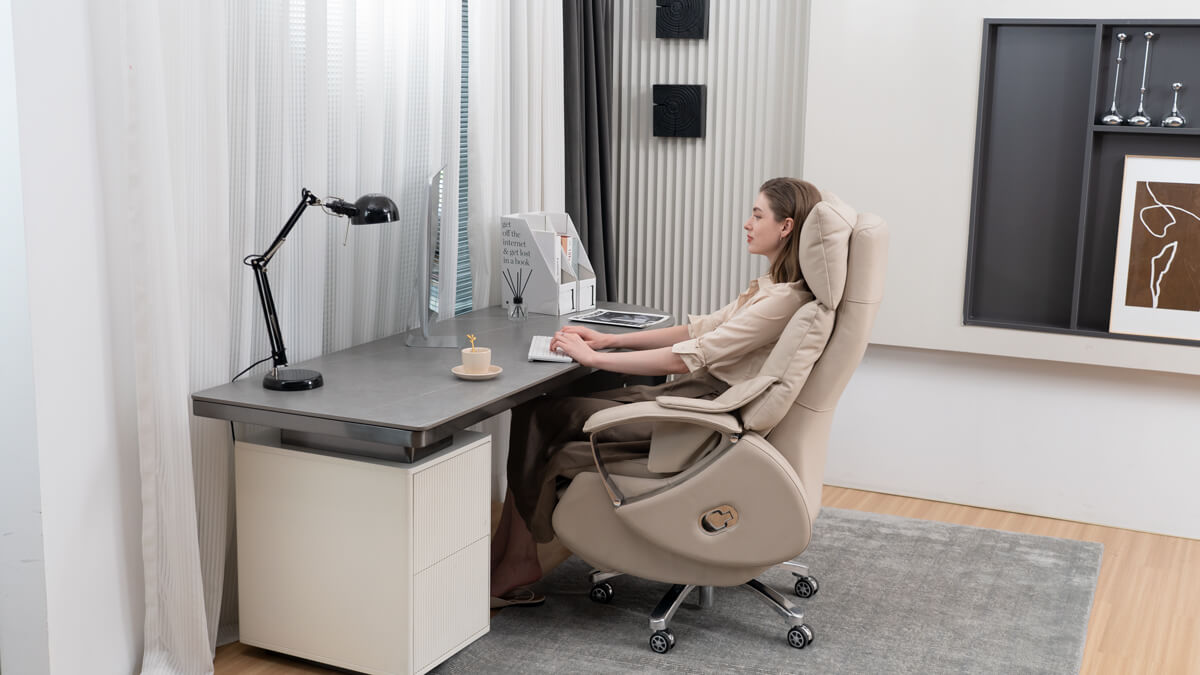Electric office chairs, with their luxurious comfort and ergonomic adjustments, can sometimes need a little TLC. Whether it's a stubborn stain, a faulty motor, or a desire to give it a deep clean, understanding how to take apart your electric chair is a valuable skill.
While the process might seem daunting, it's a combination of simple steps and common sense. This guide will help you navigate the disassembly process safely and effectively.
Important Note: Before you begin, always unplug the chair from the power source to prevent electrical hazards. Consult your chair's manual for specific instructions and warnings related to your model.
Your Toolkit:
- Phillips Head Screwdriver: Your trusty companion for most screws in office chairs.
- Flat Head Screwdriver: For those pesky screws or clips that defy the Phillips head.
- Small Hammer: For gently tapping out stubborn screws or clips.
- Protective Gloves: Recommended to protect your hands from scratches and grime.
- A Clean Workspace: A clean space will help you keep track of screws and avoid misplacing parts.
The Steps of Disassembly:
1. Disconnect the Power: This is the first and most crucial step. Unplug the chair from the power outlet.
2. Dethroning the Armrests:
- Find the Screws: Look for screws on the underside of the armrests, where they connect to the chair base. These are usually concealed under small plastic covers.
- Loosen and Remove: Use your Phillips screwdriver to loosen and remove these screws. Store them safely.
- Lift and Release: Gently lift the armrests upwards. Some chairs may require a slight wiggle to detach them from the base.
3. Taking Down the Backrest:
- Identify the Screws: Locate the screws connecting the backrest to the base. They are usually visible on the back of the chair.
- Loosen and Remove: Utilize your Phillips screwdriver to loosen and remove the screws.
- Tilt and Detach: Carefully tilt the backrest forward, detaching it from the base. Handle it gently, as it can be heavy.
4. Unseating the Seat:
- Find the Screws: Underneath the seat, locate the screws that connect it to the base.
- Loosen and Remove: Loosen and remove these screws using your Phillips screwdriver.
- Lift and Separate: Once the screws are out, carefully lift the seat straight up. Be mindful of its weight.
5. Disassembling the Base:
- Find the Base Screws: Locate the screws that connect the base plate to the wheels, usually found underneath the base.
- Loosen and Remove: Use your Phillips screwdriver to loosen and remove these screws.
- Release the Wheels: Once the screws are removed, the wheels should easily pull off the base plate.
- Further Disassembly: Some bases may have additional components that can be further disassembled with screws or clips.
6. Accessing the Electric Mechanism:
- Identify the Control Box: Locate the control box for the electric motors. This is often found in the base of the chair or underneath the seat.
- Remove the Cover: This box usually has a cover held in place by screws or clips. Carefully remove the cover to access the electric components.
- Inspect and Disconnect: Once the cover is off, you can inspect the wiring, motors, and other electrical components. If necessary, you can disconnect the wires to access individual components.
Reassembly: Bringing Your Chair Back to Life
- Reverse the Steps: Follow the disassembly steps in reverse order to put your chair back together.
- Secure the Screws: Make sure all screws are firmly tightened to prevent any wobbly parts.
- Reconnect the Power: Once the chair is fully reassembled, reconnect it to the power outlet.
Tips and Considerations:
- Visual Memory: Take pictures of each step before disassembly to help you remember the reassembly order.
- Label It! Use tape and a marker to label parts if you're cleaning or repairing them, preventing a puzzle of mismatched pieces.
- Handle Wiring Carefully: When dealing with electrical components, always handle wiring with care to avoid damage or injury.
- Consult the Manual: If you have a manual for your electric chair, refer to it for specific instructions and safety precautions.
- Seek Professional Help: If you are not comfortable with electrical work, it's best to seek professional help for any repairs or modifications.
A Final Note: This guide provides a general overview, and specific designs may vary. Always refer to your chair's manual for detailed instructions and safety warnings.
By understanding the steps of disassembly and reassembly, you gain a sense of control over your electric office chair, allowing you to maintain and care for it effectively. Remember, a well-maintained chair is a comfortable and productive chair!





